NAVYPEDIA
 Support the project with paypal
Support the project with paypal
Photo

P-3
Ships
| Name | No | Yard No | Builder | Laid down | Launched | Comp | Fate |
|---|---|---|---|---|---|---|---|
| П-1 [P-1] (ex-Правда [Pravda]) | 218 | 189 Yd (Ordzhonikidze Yd), Leningrad | 5.1931 | 3.1.1934 | 6.1936 | sunk 9-17.9.1941 | |
| П-2 [P-2] (ex-Звезда [Zvezda]), 6.1949- Б-31 [B-31] | 219 | 189 Yd (Ordzhonikidze Yd), Leningrad | 12.1931 | 15.4.1935 | 7.1936 | test ship 8.1944, TS 9.1951, hulk 8.1955 | |
| П-3 [P-3] (ex-Искра [Iskra]), 6.1949- Б-1 [B-1] | 220 | 189 Yd (Ordzhonikidze Yd), Leningrad | 12.1931 | 4.12.1934 | 7.1936 | stricken 6.1952 |
Technical data
| Displacement standard, t |
|
|---|---|
| Displacement normal, t | 955 / 1690 |
| Length, m | 87.7 |
| Breadth, m | 8.00 |
| Draught, m | 2.91 |
| No of shafts | 2 |
| Machinery | 2 MAN M10V49/48 diesels / 2 PP84/95 electric motors |
| Power, h. p. | 5400 / 1100 |
| Max speed, kts | 18.8 / 6.5 |
| Fuel, t | diesel oil 92 |
| Endurance, nm(kts) | 5660(15.3) / 60(3.2) |
| Armament | 2 x 1 - 100/49 B-24, 1 x 1 - 45/43 21K, 6 - 533 TT (4 bow, 2 stern, 10) |
| Electronic equipment | Merkuriy or Mars-A or Mars-DM or Mars-ShM hydrophone |
| Complement | 56 |
| Diving depth operational, m | 50 |
Standard scale images

P-1 1939
Graphics
Project history
Fleet submarines, intended for servcie with the surface fleet, attacks on landing forces as self-supporting, and in interaction with other submarines or coastal forces. The design assignment was given out in 1930. Priority was returned to surface speed, corresponding to cruising speed of battleships, and armament. The demand of minimum draught was thus made, the high freeboard became corollary of that. Boats had double-hulled construction with external arrangement of pressure hull frames (for the first time in Russian practice). Light hull differed by characteristic "hump" amidships, creating sinking moment in submerged position. On trials big diving time, shallow diving depth (no more than 70m), a surface speed shortage and bad controllability in submerged position have come to light. Besides, because of unsuccessful construction of cutwaters of bow TTs, after commission of boats it was necessary to shorten fore end that has led to decrease of speed on 0.8kts. All it together brought battle value of IV series submarines to a minimum, and continuation of their building have refused.
Modernizations
1939, all: CT was rebuilt
1940-1942, all survived: - hydrophone; + Mars-16 hydrophone
Naval service
In days of war they were used as transport and training submarines. P-1 was lost 10-11.9.1941 in Gulf of Finland, possibly on a mine.
 HOME
HOME FIGHTING SHIPS OF THE WORLD
FIGHTING SHIPS OF THE WORLD RUSSIA / USSR
RUSSIA / USSR SUBMARINES
SUBMARINES "Series IV" submarines (P-1) (1936)
"Series IV" submarines (P-1) (1936)
